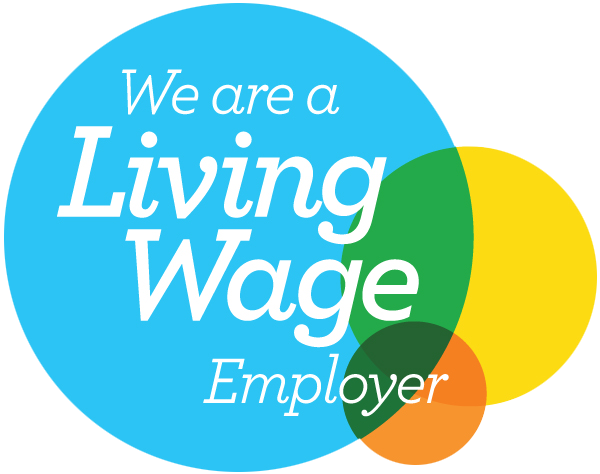
Equal Pay Audits enable businesses to find any areas that are susceptible to equal pay claims – but does an employer need to act immediately on this information when they discover this? Here we outline our Equal Pay service and how we can help you to ensure fairness is at the heart of your remuneration approach.
Equal pay has been legally required since the Equal Pay Act in 1970 (mostly superseded by the Equality Act 2010). Employees can make equal pay claims on the grounds of gender, race, disability and age – placing the emphasis on eliminating all forms of discrimination. The aim of the legislation is to reduce inequality regardless of an employee’s background or demographic.
Mandatory Gender Pay Gap reporting is one tool in monitoring pay differences that arise in businesses. It is possible for an employer to meet their equal pay obligations but still have a large gender pay gap. It is equally possible for an employer without a gender pay gap to be breaching the law by failing to meet equal pay.
The next deadline for publishing is the 4 April 2022, for each company which meets the threshold of having over 250 employees. The report needs to be accessible to employees and the public. Whilst employers need to be able to explain any gender pay gaps with the optional contextual narrative that can accompany the headline figures published on the company’s website and on the government portal, the focus is quickly moving towards equal pay as a whole.
There are no civil or criminal penalties for failing to publish the figures, but the company could face enforcement action from the Equality and Human Rights Commission. By not investigating gender pay gap figures, this may also be symptomatic of wider equal pay risks that exist within the business and the reputational ramifications that these carry. The government also publishes league tables that can be picked up by the press and prospective candidates, affecting your recruitment and retention. It is expected that this mandatory reporting will be extended to cover ethnicity pay gaps in the future, reinforcing the importance of pay systems that are equitable.
The wider focus on pay and whether it is objectively fair is critical in future-proofing your organisation. The complex tribunal process alone should deter employers from ignoring equal pay risks – the time it takes up across a business with witnesses, preparing for a robust defence and establishing the facts, alongside the adverse publicity, negatively impacts the whole organisation.
Aside from the impact on productivity and the financial cost of managing these claims, successful equal pay claims mean that the employee is entitled to up to six years’ back pay unless a material factor blocks the claim. A robust defence is vital, but an equal pay audit could be ordered as part of the fact-finding mission.
Prospective candidates and existing employees want to know that their future employer is equitable and fair in their approach. The comparator is someone of the opposite sex doing equal work with more favourable terms. This can enable men who may be grouped with other women to ‘piggyback’ on these claims to level the field in terms of the reward someone receives for doing work of the same value or scope. Parity of pay is at the heart of equal pay. The focus of media headlines has shifted from public to private sector in recent months, with supermarkets under heavy scrutiny at present.
It is hugely important from an employee relations perspective, making this an employer brand issue. Employees are increasingly driven by their values when it comes to deriving satisfaction at work and want to know that you fare well as an employer against your peers, as this is indicative of how you treat your people. The wider culture is also reflected, as failing to tackle inequality can aggravate gender pay gaps and lead to further claims from employees.
Decide at the outset whether to use a third party or internal resource. You can build up internal expertise on the subject matter as your people do the audit and the pace can be controlled, balanced around the day job. The costs can be absorbed into organisational project costs.
However, using a third party means that the employer does not have to act immediately to assess the costs and risks. If you instruct through a lawyer or third party, this gives employers some reassurance that they are not bound to act immediately on the data itself. This gives you breathing room to step back and look at the picture of pay holistically. Experts can make sure you are following best practice and being efficient with the time spent on data processing.
With years of experience in the field, our detailed and confidential Equal Pay Audits follow a systematic process – a 5-step equal pay review model set out below. Many organisations jump straight into the pay data collection and data processing. However, it is important to step back to define the scope of the review and ensure you are comparing like for like. Agreeing this framework will avoid problems further down the line that might be caused by inaccurate data and job families. A clear plan avoids issues later on.
Be realistic about what you can achieve once you have completed the audit. Consider what you have capacity to address in the short-term and longer-term. This should be done before you embark on the project, as you might want to scale back the extent of the audit to target any corrective action you need to take when you get the results. Equally, you may want to instruct a third party to carry out the audit so that you can avail yourself of the legal protection this can attract, giving you more time to process the information.
At the outset of the process, we provide a Discovery Service that defines the scope of the review and the roles to include in this analysis. This service highlights what needs to be done to undertake Step 3 to identify any pay gaps.
We work closely with you to clarify how your organisation is structured. Multiple geographies and sites may mean that different terms and conditions operate. We identify multiple approaches and any collective agreements in place to truly understand the operating model for your organisation that might affect questions of equal pay. Accuracy of the data will affect the validity and accuracy of the audit results.
We identify the grading scheme in place or whether there are different schemes in operation. This encompasses whether you operate single grades or broadbands and whether you have a method of grouping certain roles, such as job families. Whether your employee data is in one HR system or the extent to which it is available, we use this time to discover the level of information available for the review. This includes the type of data, for example salary, bonus, benefits and other contractual terms.
We also establish whether you have an analytical job grading system in place. This directly reflects how you group your roles together in terms of the nature and type of work – job families and job grading systems in place to determine the size and seniority of the role will be very important in defining the outcomes of the Equal Pay Audit.
Without an analytical job grading system in place, it makes it very difficult to ensure you are comparing truly equal roles. Roles need to be grouped together with the same level of demands and skills. The market will determine that you pay differently for different demands.
We identify whether you offer a single pay range for all roles or multiple ranges and whether they overlap. This considers whether premiums or other pay elements are included in regular pay, for instance, London weightings. We also identify who is eligible for your bonus scheme if you operate one, capturing where this information is held.
We also get a sense of whether we should look at certain areas first, identifying where the greatest Equal Pay risks may be – are there any cases that employees have raised or that have been resolved? Which parts of the business or roles have a prevalence of male or female employees? We identify any instances where employees work on the same site, but under different terms, or on different sites under the same terms to cross-check for any pay disparities.
We identify who needs to be involved and what each person will be responsible for. Trade Union or employee representatives that you want to involve will need to be factored into the approach and timescales.
The management report we produce from the Discovery Service provides you with a:
In litigation, at a certain point, the parties hit the disclosure obligation. Litigation operates transparently – on a ‘cards on the table’ basis. If relevant to an issue disputed, the documents have to be produced for the other side to inspect. If a document is privileged, the content is hidden from the other side. Legal advice privilege operates, creating a relationship of confidence between the lawyer and client. The communication becomes confidential.
The definition of the client is important – this will not often be the same as the organisation involved in the litigation. It needs to be a client group of defined individuals to keep it confidential and privileged. Litigation privilege can also protect communications between lawyers, clients and a third party where the dominant purpose is litigation. The documents must be confidential and post-date the claim.
Sharing too widely can lose legal privilege. If you are working with lawyers to take legal advice about potential equal pay claims arising from your audit and you are working with a third party like Paydata and the information comes to the lawyers to assess the legal risk, this can all be covered by legal privilege but it needs to be set up correctly from the outset. The intention needs to be made clear at the outset in this highly complex area of law. If you do things under privilege, you cannot then rely on that information to defend a claim without losing legal privilege, this information would have to be made public.
Our Reward Expert Tim Kellett recently hosted a webinar with Jane Fielding, Partner and Head of Employment, Labour & Equalities at international law firm Gowlings WLG. The session (available on demand here) explored how legal privilege can provide protection for the employer – empowering them to identify any equal pay risks within their business and make evidence-based decisions. The following questions about equal pay emerged.
1. What is the biggest challenge organisations face in conducting Equal Pay Audits?
Having conducted Equal Pay Audits for over 15 years, we’ve seen many challenges. Buy-in from senior management is one of the biggest hurdles. Persuading senior management is a common challenge from the outset. The second one is having that grading system in place. It is hard to do an accurate analysis without the system to identify like for like work and if not, this creates work further down the line to unpick false positives. The third challenge is that some employers become overwhelmed with what to do. We help them prioritise where to take action if they have done an audit of the whole organisation.
2. Does Equal Pay take precedence over TUPE protection of pay rates?
If you have negotiated rates with a trade union, it is not a ‘get out of jail free’ card. Unions can be sued themselves and have been sued before so it is not a defence in itself and equal pay needs to be objectively verifiable. TUPE transfers could be a defence if they have been operating without review ever since – however, if you have inherited a workforce and there is an equal pay issue, the TUPE protection will not last forever and from an employer brand point of view, you might want to review this and remedy the situation sooner rather than later.
3. “Performance” as a Material Defence Factor – is it a fundamental reason given for pay differential even if people are doing the same role or one of equal value?
Theoretically, performance may justify a difference in treatment on pay, but it is not something we see relied on to justify basic salary differentials. It is more common in relation to a term such as bonus, provided it is based on objective criteria untainted by sex. Equal pay tends to work on the basis there is a value for a role reflected in the basic salary and while salary ranges are used to reflect greater experience in a role, differentials between peers within salary ranges tend not to be justified by way of performance. The strength of your position will always be the data you have and the evidence you can adduce.
4. Does equal pay also cover contractual benefits, e.g. car allowance?
An equal pay claim can be brought to challenge any contractual employment benefits. Challenges to discretionary benefits would be by way of a sex discrimination claim.
5. Our senior team are nervous about the actions they will be forced to take from conducting an Equal Pay Audit – to what extent can legal privilege address this concern?
An understandable concern - you can use legal privilege to do an equal pay audit (EPA) purely to get legal advice on the potential legal exposure that the organisation would face if challenged. But if you want to be able to rely on the results to take action, you would need to do a second open process to avoid waiving privilege over the advice. So, it is possible but needs to be planned and implemented carefully and may require a second exercise if action is needed. If you were ordered to conduct an EPA following an employment tribunal decision against the organisation, this would not work.
6. In what circumstances would the Employment Tribunal not order an Equal Pay Audit?
The Employment Tribunal must order an Equal Pay Audit unless there is evidence that the organisation has carried out an audit in the last three years so there is no point ordering another one; or it is clear what action is required if there is a self-contained, individual case; or there may be no reason to think it is a wider issue; or if the disadvantages of an audit would outweigh the benefits, for example parts of the business are going to be sold. Where there is not much to be gained from this, it will not be ordered. Not many equal pay claims get all the way to the Tribunal so the audit would not be ordered.
We understand the common challenges involved in tackling Equal Pay Audits and can help you overcome them. We will help you follow best practice and secure more time to address any pay gaps you have within your organisation. Call us today to discuss how we can help you meet your equal pay obligations.

Managing Director
Tim is a passionate HR specialist with over 20 years’ experience in pay and reward. As a director of Paydata, Tim has worked with thousands of satis...
19 October 2021
We have once again teamed up with international law firm Gowling WLG, this time bringing you a webin...
31 August 2021
The delayed Gender Pay Gap deadline is fast approaching. Are you prepared? In this guest blog, pay g...
10 August 2021
The events over the past year, including the killing of George Floyd and the Black Lives Matter move...
Sign up for briefings on pay benchmarking, salary surveys, reward strategy and statistical updates.
sign up for updates
© Paydata Ltd 2025 All rights reserved.
Registered in England no: 3632206
VAT no: 728 0808 28
Paydata Ltd, 24 Commerce Road, Lynch Wood, Peterborough, Cambridgeshire, PE2 6LR

